Abstract
Models of marine ecosystem productivity rely on estimates of small-scale interactions, particularly those between copepods and their algal food sources. Rothschild and Osborn [Rothschild, B. J. & Osborn, T. R. (1988) J. Plankton Res. 10, 465-474], hypothesized that small-scale turbulence in aquatic systems increases the perceived abundance of prey to predators. We tested this hypothesis by exposing the planktonic copepod Centropages hamatus to turbulent and nonturbulent environments at different prey concentrations. Our results fell into two main categories. First, the response to turbulence was characterized by an initial period having a high number of escape reactions. This period was followed by one of increased foraging. C. hamatus responded to the higher encounter rates due to turbulence as if it were experiencing altered prey concentrations. Second, the termination of turbulence resulted in an increased foraging response, which was not directly related to the encounter rate. Functional response curves do not adequately explain this foraging response because the time course of the foraging response depends on prior encounter experience and foraging motivation.
Full text
PDF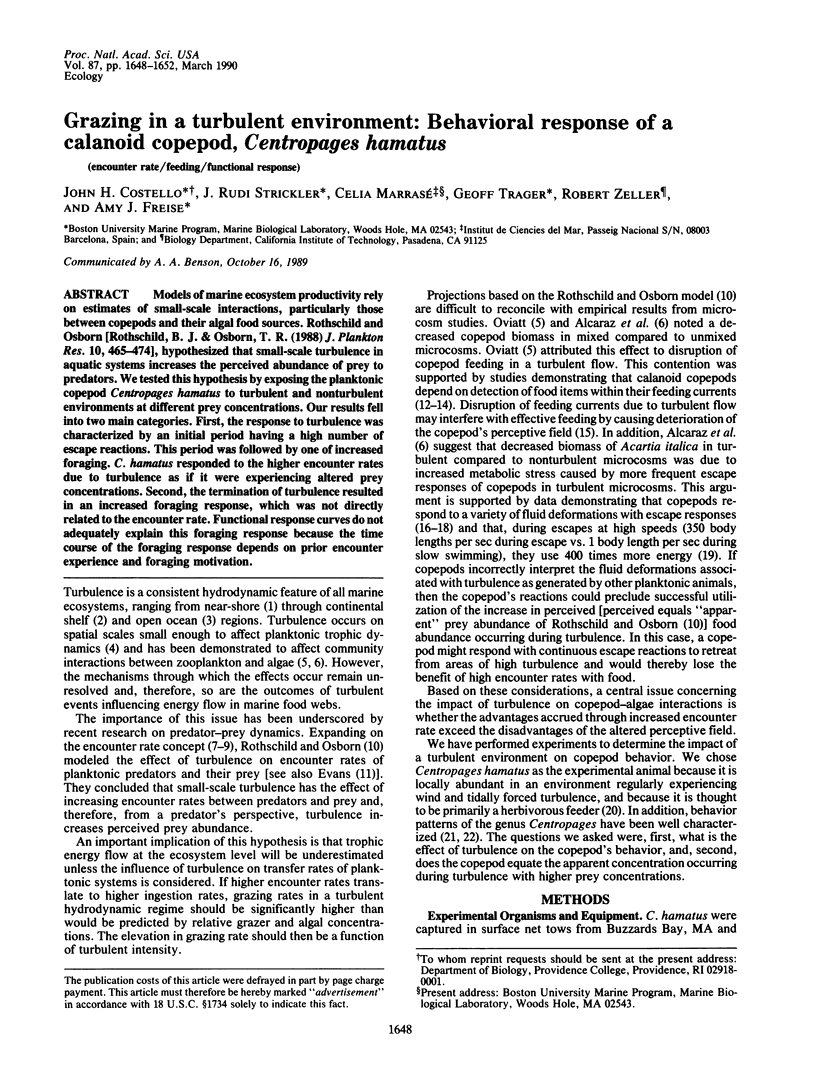
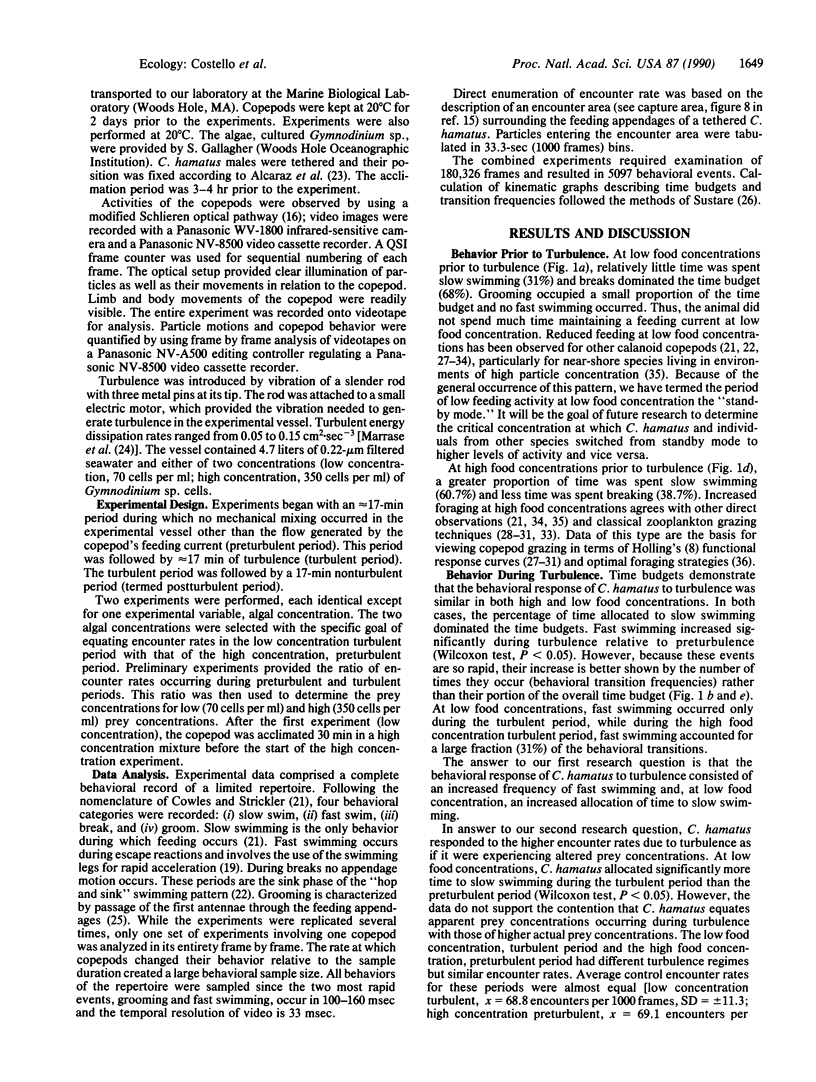
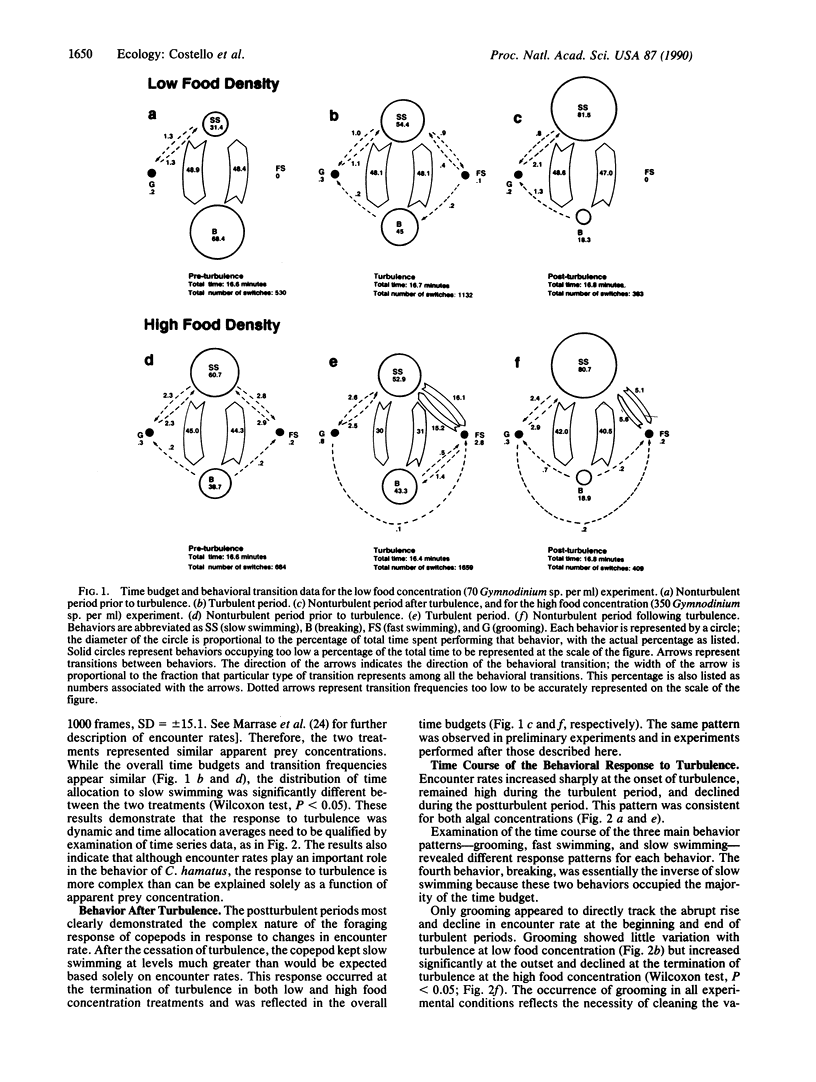
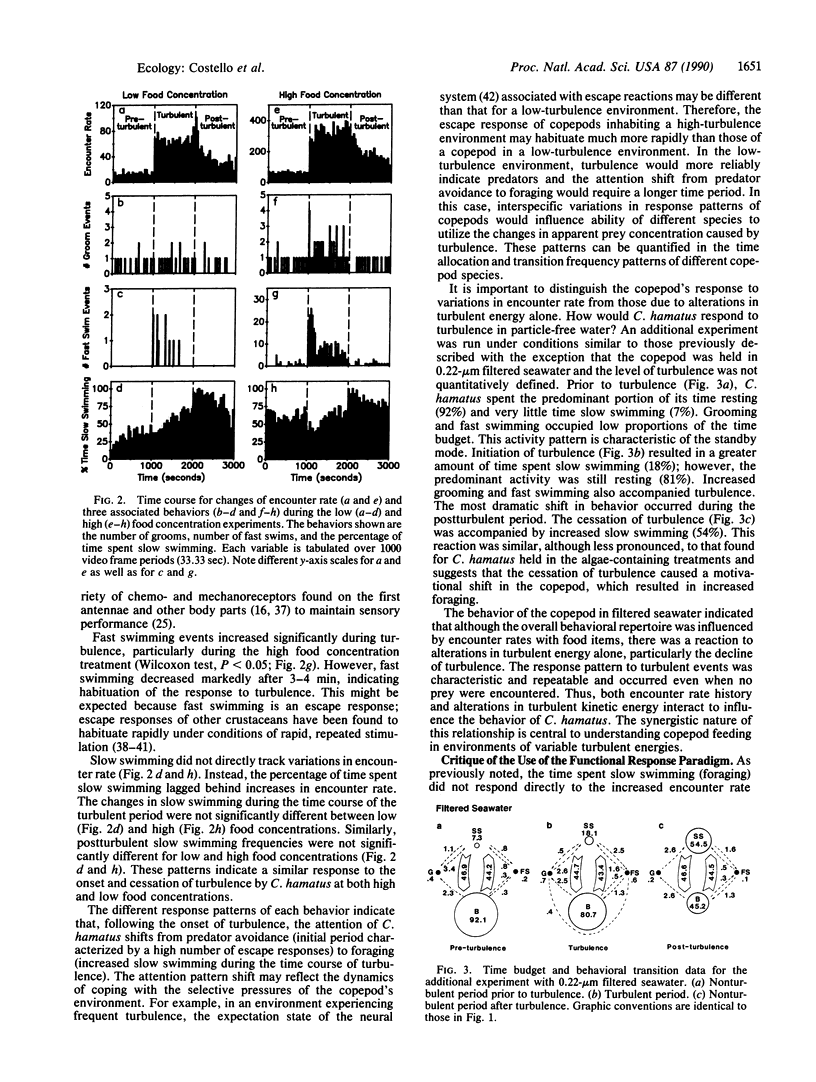
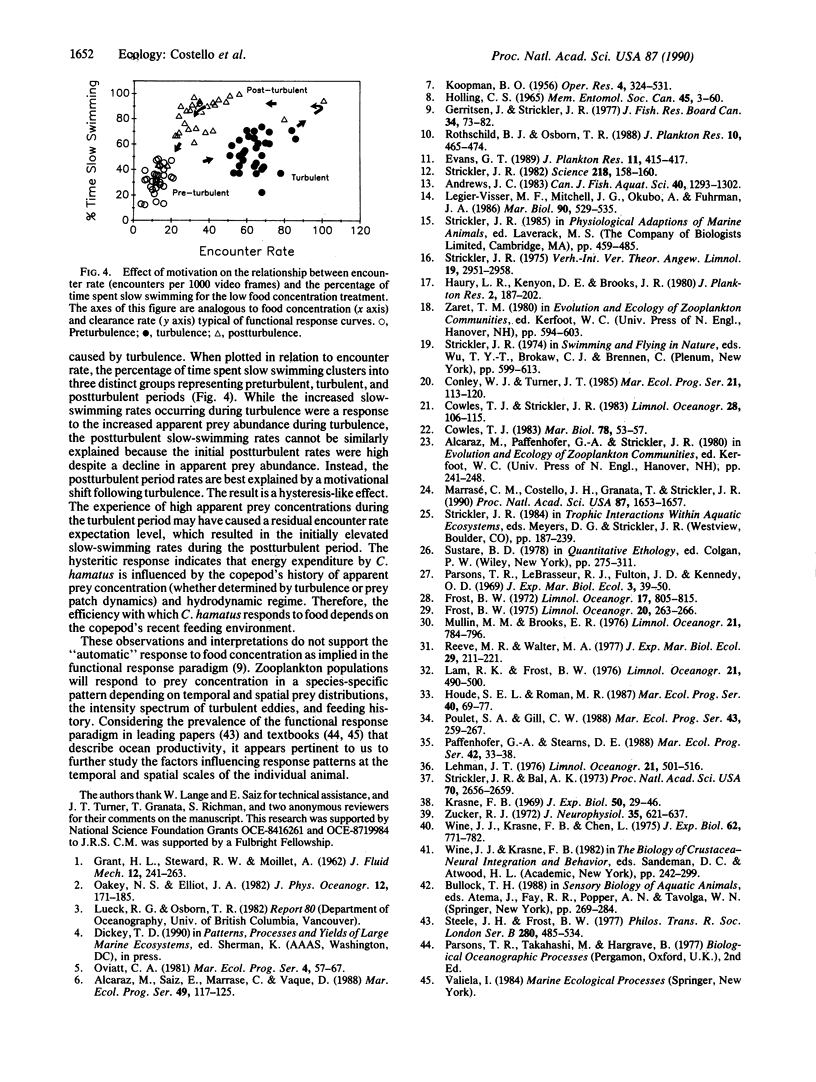
Selected References
These references are in PubMed. This may not be the complete list of references from this article.
- Krasne F. B. Excitation and habituation of the crayfish escape reflex: the depolarizing response in lateral giant fibres of the isolated abdomen. J Exp Biol. 1969 Feb;50(1):29–46. doi: 10.1242/jeb.50.1.29. [DOI] [PubMed] [Google Scholar]
- Kumar D., Gemayel N. S., Gill S. K., Bray G. A., Roy-Burman P., Deapen D., Mack T. M. Type-specific concordance in young diabetic monozygotic twins. Adv Exp Med Biol. 1988;246:259–267. doi: 10.1007/978-1-4684-5616-5_32. [DOI] [PubMed] [Google Scholar]
- Marrasé C., Costello J. H., Granata T., Strickler J. R. Grazing in a turbulent environment: energy dissipation, encounter rates, and efficacy of feeding currents in Centropages hamatus. Proc Natl Acad Sci U S A. 1990 Mar;87(5):1653–1657. doi: 10.1073/pnas.87.5.1653. [DOI] [PMC free article] [PubMed] [Google Scholar]
- Strickler J. R., Bal A. K. Setae of the First Antennae of the Copepod Cyclops scutifer (Sars): Their Structure and Importance. Proc Natl Acad Sci U S A. 1973 Sep;70(9):2656–2659. doi: 10.1073/pnas.70.9.2656. [DOI] [PMC free article] [PubMed] [Google Scholar]
- Strickler J. R. Calanoid copepods, feeding currents, and the role of gravity. Science. 1982 Oct 8;218(4568):158–160. doi: 10.1126/science.218.4568.158. [DOI] [PubMed] [Google Scholar]
- Wine J. J., Krasne F. B., Chen L. Habituation and inhibition of the crayfish lateral giant fibre escape response. J Exp Biol. 1975 Jun;62(3):771–782. doi: 10.1242/jeb.62.3.771. [DOI] [PubMed] [Google Scholar]
- Zucker R. S. Crayfish escape behavior and central synapses. II. Physiological mechanisms underlying behavioral habituation. J Neurophysiol. 1972 Sep;35(5):621–637. doi: 10.1152/jn.1972.35.5.621. [DOI] [PubMed] [Google Scholar]


